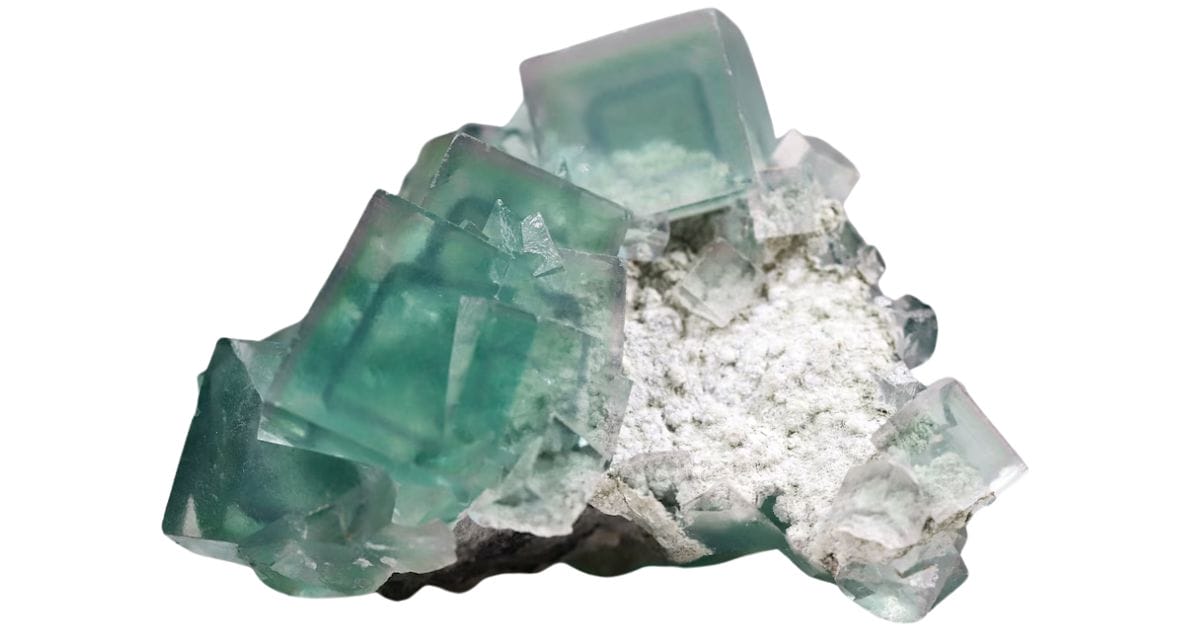Some rocks glow under black light, and this cool feature is because they are fluorescent minerals. Examples include fluorite, ruby, and sodalite, which look pretty ordinary until they’re under the right kind of light.
These glowing minerals can be found all over the world and are a hit with rock collectors. They show how nature can surprise us with cool tricks hidden in plain sight.
The Different Fluorescent Rocks and Crystals
Some minerals have an amazing ability to glow under certain lights. This glowing feature is due to materials in the rocks that respond to light in a cool way. We’re going to talk about what makes these rocks glow and why it happens.
Fluorite
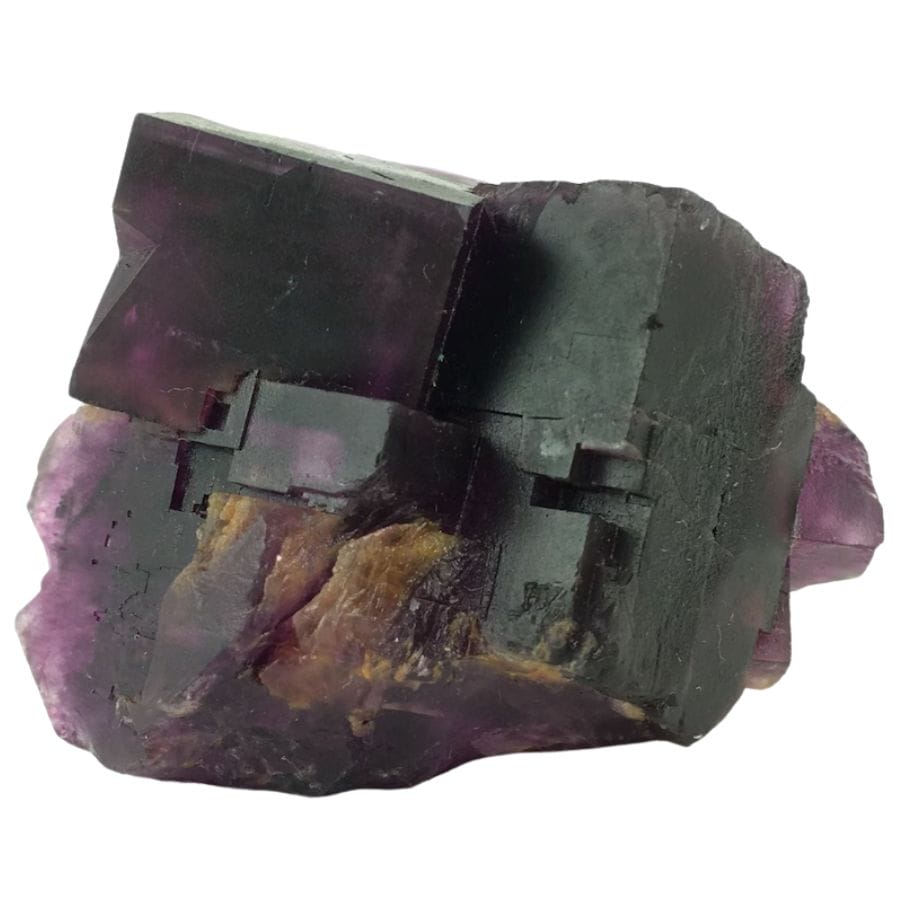
Fluorite is a colorful mineral that falls into the category of halide minerals. Its chemical makeup is calcium fluoride, which is simple but leads to a variety of colors.
When you shine black light on fluorite, it typically glows bright blue. It can also sometimes glow white. The term “fluorescence” actually originates from the name “fluorspar,” which is another name for fluorite.
Fluorite forms under specific conditions, mainly in areas with lots of geological activity. You can find it in places like Mexico, China, and South Africa, where the right mix of minerals and heat come together.
Calcite
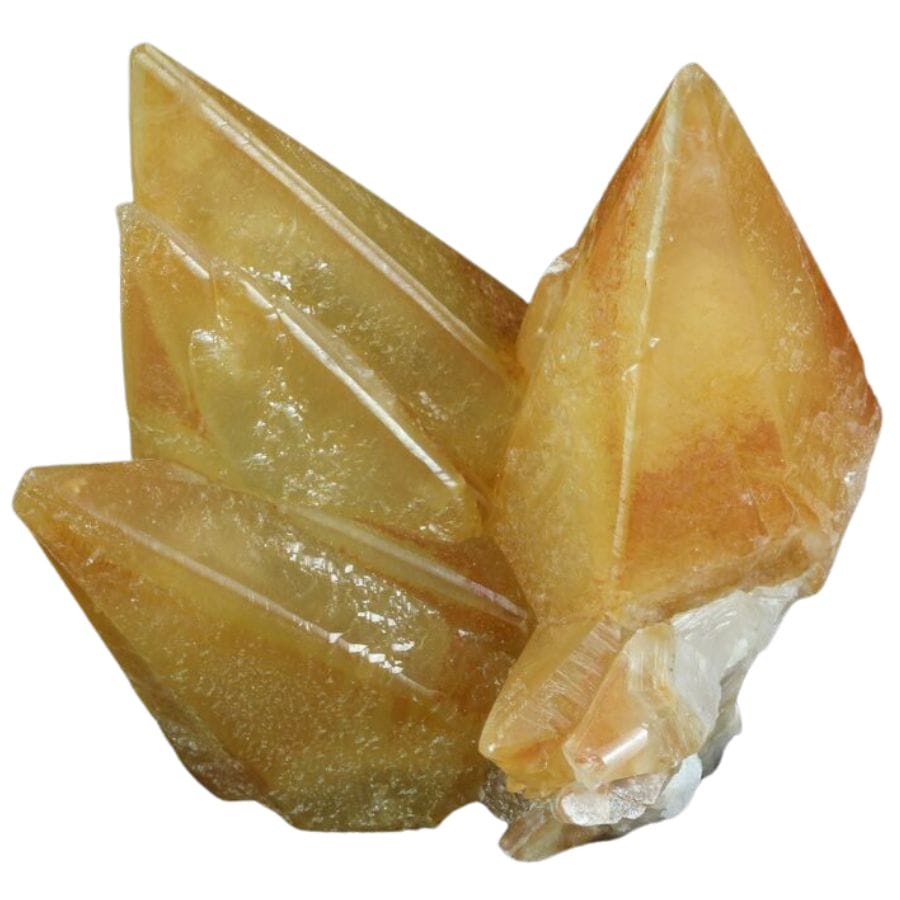
Calcite is a type of mineral that belongs to the carbonate group. Its chemical formula is CaCO₃, which means it is made of calcium, carbon, and oxygen.
Under black light, calcite can glow in a range of colors, including red, blue, and pink. Even without special lighting, calcite can appear in a variety of colors and crystal shapes.
Calcite forms in various conditions, often in sedimentary environments like limestone and marble. It’s found in many places around the world, such as Iceland, Mexico, and the United States.
Aragonite
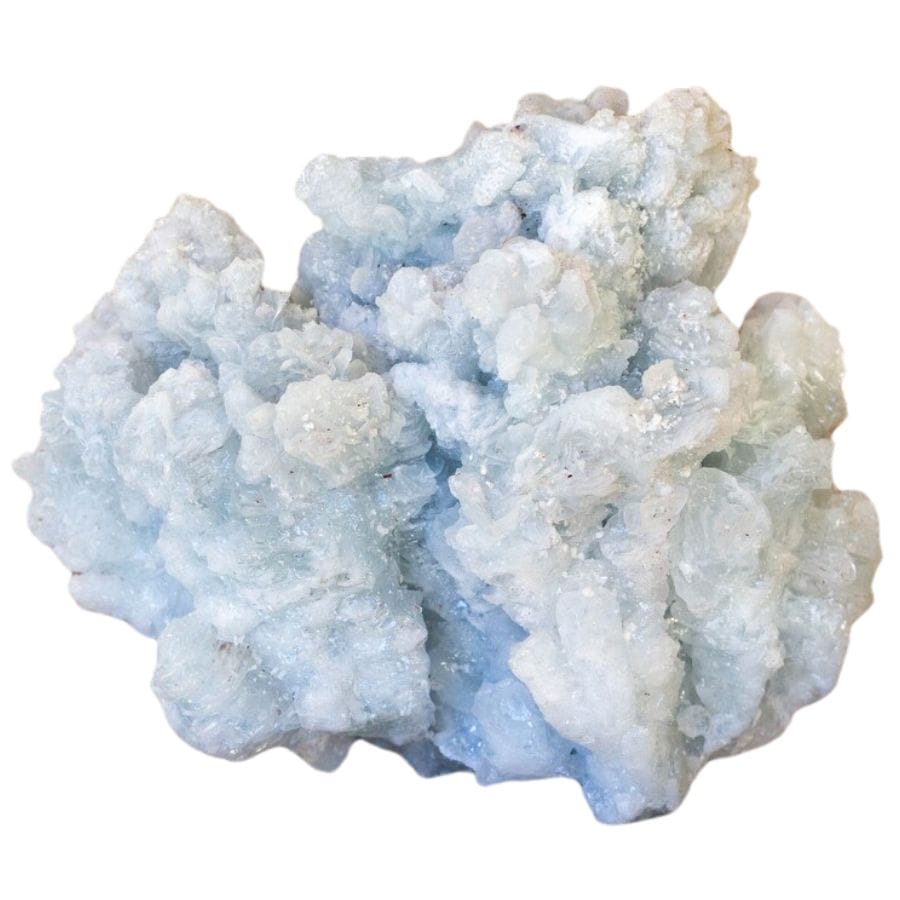
Aragonite is a mineral that is part of the carbonate group, just like calcite. Its chemical formula is CaCO₃, which stands for calcium carbonate, but it forms in a different crystal structure than calcite.
When aragonite is exposed to black light, it can show off a range of colors. from white to greenish.
Aragonite usually forms in marine environments, like coral reefs and mollusk shells. You can find it in many places, including the Bahamas.
Opal
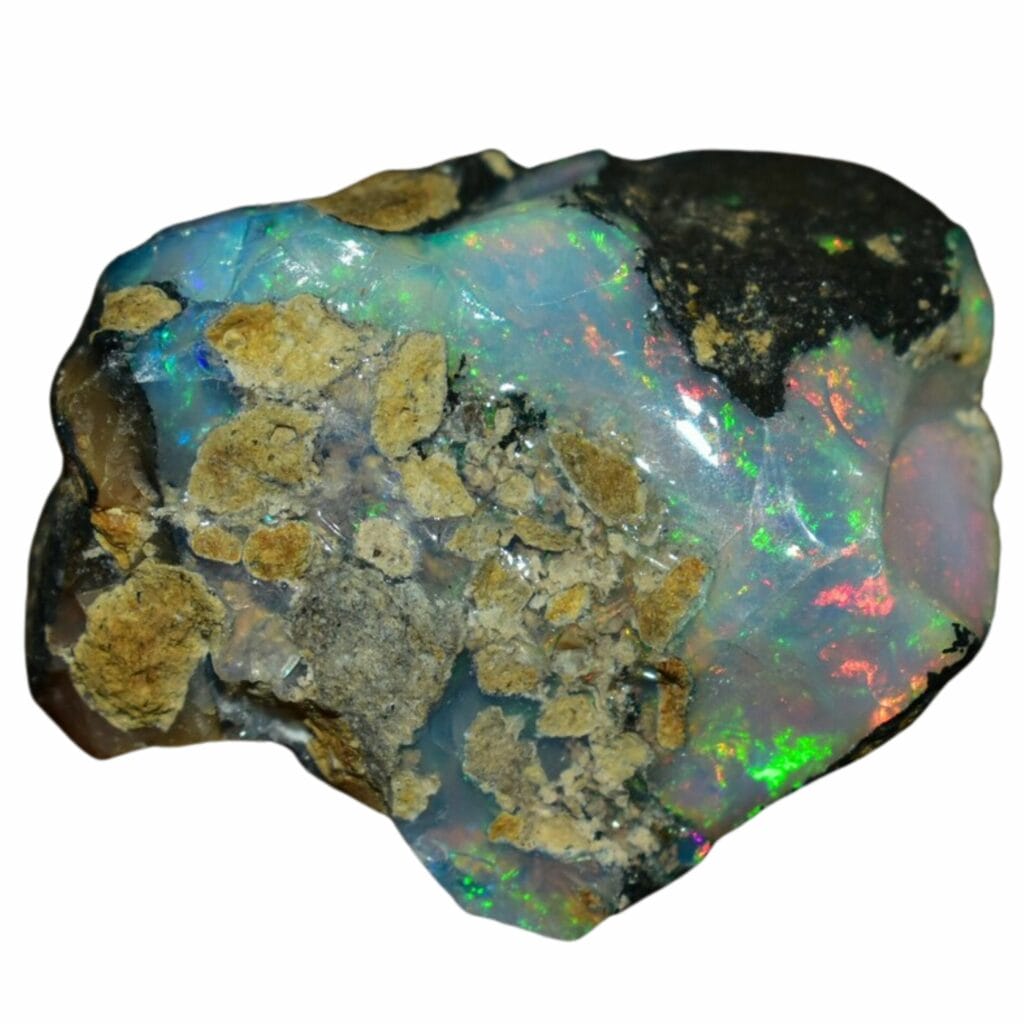
Opal is a type of gemstone that’s not classified like most minerals because it contains water. It’s made of silica, just like quartz, but has water inside it which can range from 3% to 21% of its weight.
Some opals can fluoresce, showing bright green or blue colors under black light. This cool feature adds to the opal’s already fascinating play of color.
Opals usually form in areas with lots of silica-rich water, like around hot springs. Places like Australia, Mexico, and Ethiopia are famous for their beautiful opals.
Hyalite
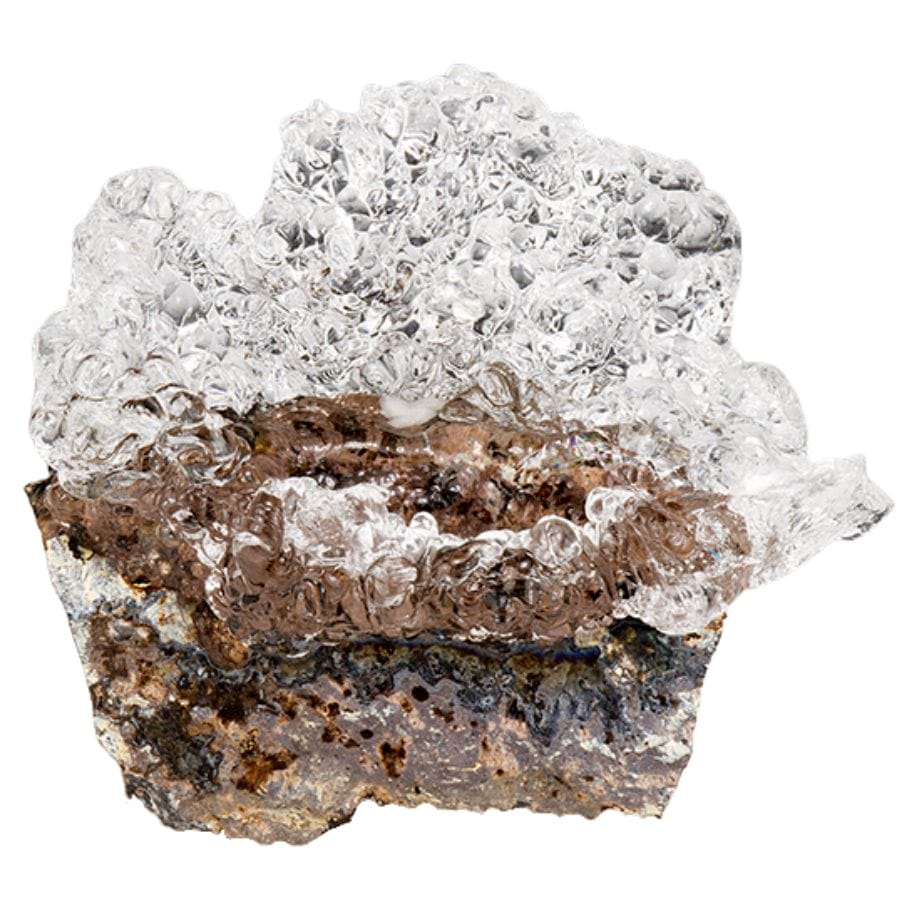
Hyalite is a form of opal with a glassy and clear appearance, classified under the mineraloid category because it lacks a crystalline structure. Its chemical makeup is mostly silica and water, making it a type of opal.
Under black light, hyalite can glow with a strong green color, making it stand out in the dark.
The formation of hyalite requires volcanic rock environments where silica-rich water can deposit the mineral in cavities or on rock surfaces. You can find hyalite in places like Mexico, the Czech Republic, and the United States.
Chalcedony
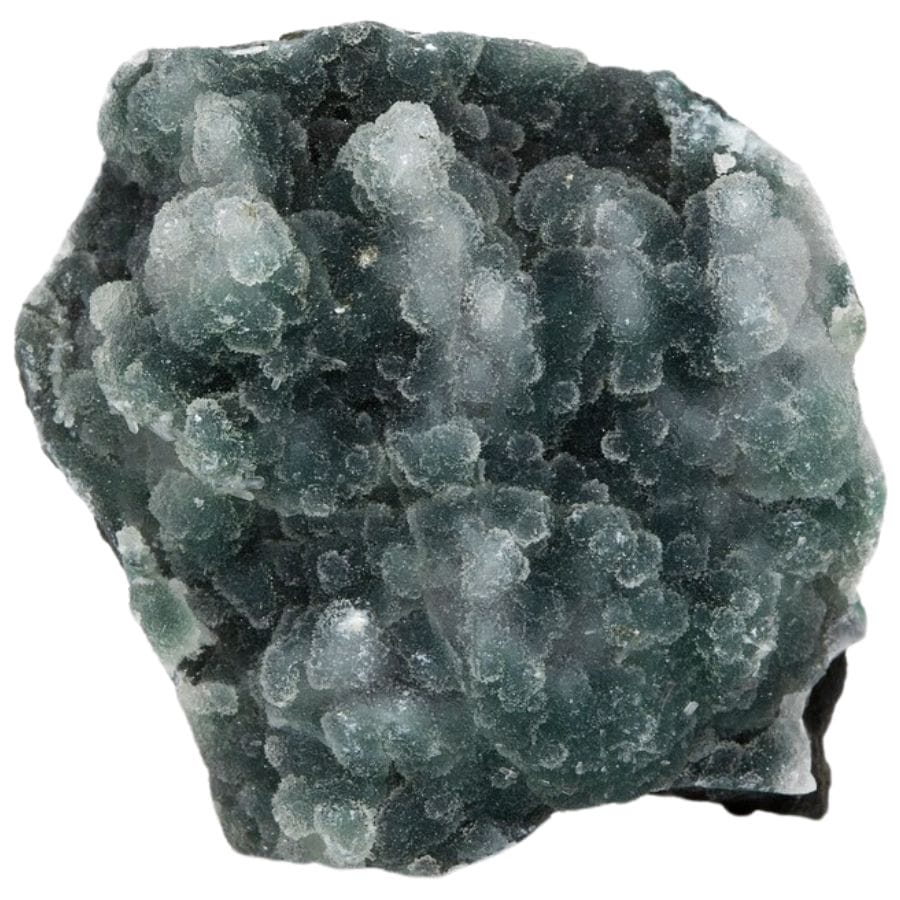
Chalcedony is a type of quartz that’s made up of very fine intergrowths of quartz and moganite. These two forms of silica combine to create a wide array of colors and patterns in chalcedony.
When exposed to black light, some types of chalcedony can glow with a soft, greenish color.
This gemstone forms in low temperature and high pressure, often in volcanic or sedimentary rocks. Places known for their chalcedony include Brazil, India, and parts of the United States.
Autunite
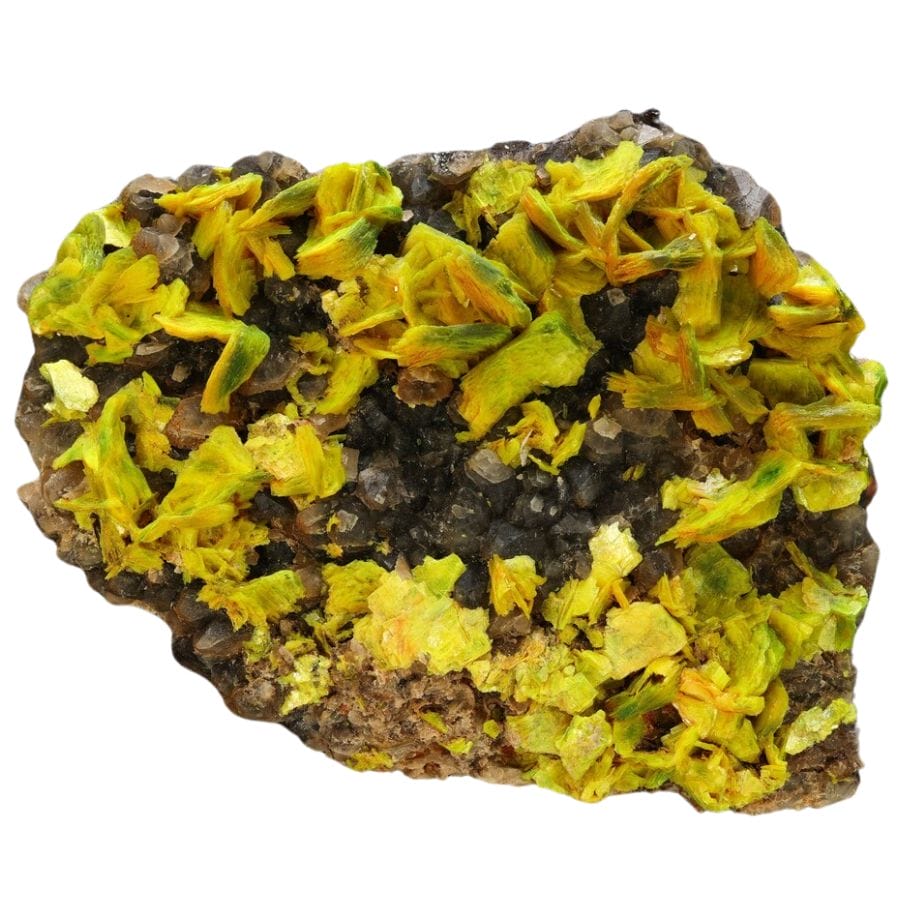
Autunite is a type of mineral that falls under the category of phosphates, with a chemical formula of Ca(UO2)2(PO4)2·10–12H2O. This means it contains calcium, uranium, phosphate, and water.
In its natural state, autunite has a pale yellow to greenish-yellow color. When viewed under specific UV llight, it can glow bright green.
The formation of autunite requires uranium-bearing rocks and a source of phosphate, conditions often found in granite or pegmatites. You can find autunite in various parts of the world, including the United States, France, and the Congo.
Ruby
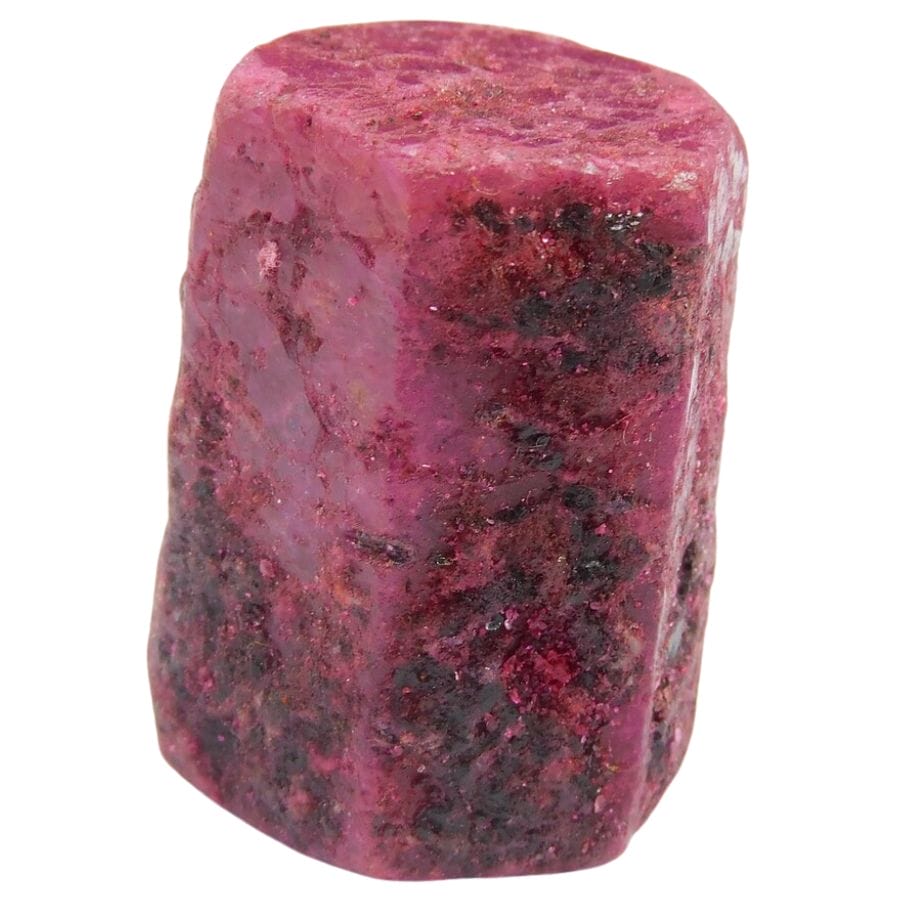
Ruby is a precious gemstone that is a variety of the mineral corundum, with its main component being aluminum oxide. The presence of chromium gives ruby its rich red color.
Rubies are most famous for their deep red colors, ranging from pinkish to blood red. You can typically tell when a ruby is the real thing if it exhibits a vibrant red fluorescence.
The creation of rubies requires specific geological conditions, typically in marble or basalt environments which provide the necessary aluminum and chromium.
Significant ruby deposits are found in countries like Myanmar, Thailand, and Madagascar.
Hydrozincite
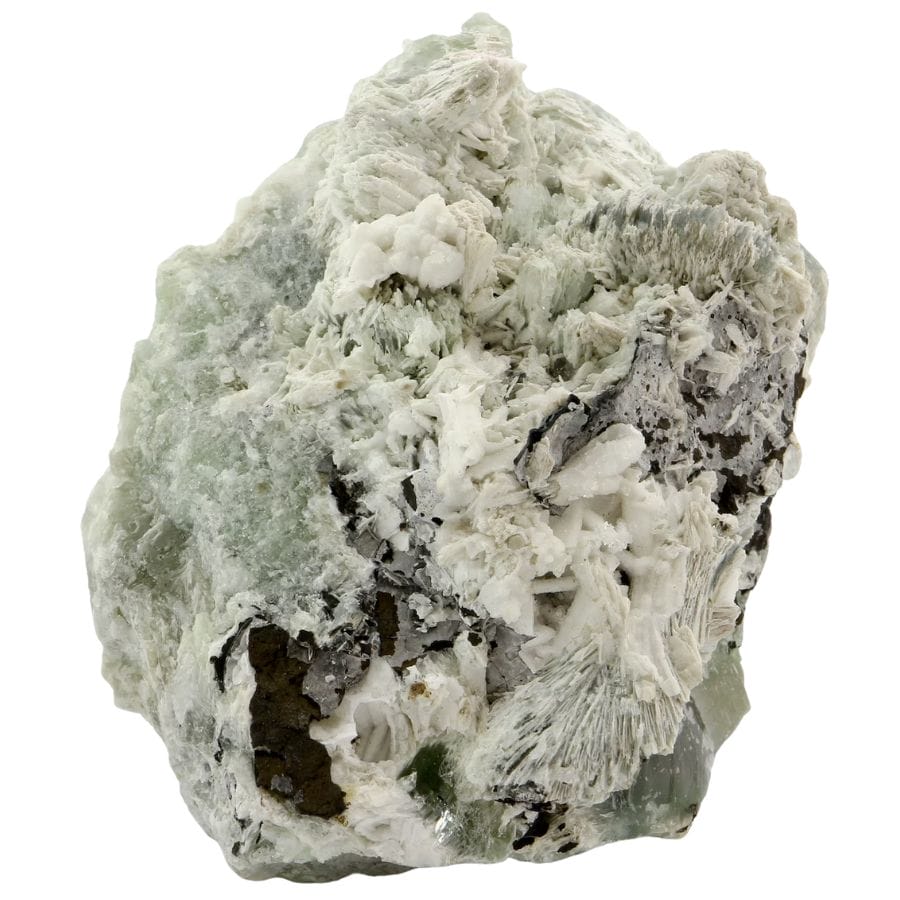
Hydrozincite is classified as a carbonate mineral, primarily composed of zinc carbonate. This mineral forms through the alteration of zinc-bearing ores, combining zinc with carbon dioxide and water.
In its natural form, hydrozincite appears white to pale yellow. However, it can display a bright blue to white fluorescence.
The formation of hydrozincite often occurs in areas with zinc ore deposits. You can find significant deposits of hydrozincite in places like the United States, Italy, and Australia.
Scheelite
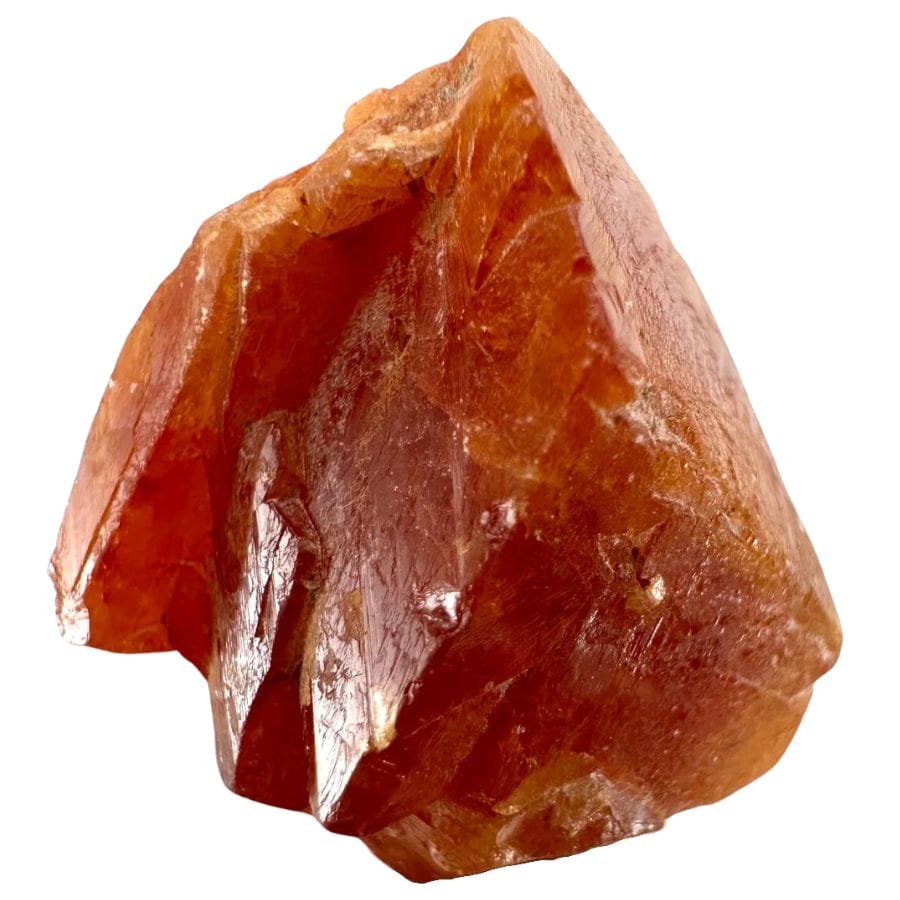
Scheelite is a calcium tungstate mineral, with the chemical formula CaWO4. It’s recognized for its high density and belongs to the tetragonal crystal system.
This mineral can range in color from white to yellow, or even brown and green. When exposed to black light, scheelite can show a bright blue or white color.
Scheelite forms in high-temperature hydrothermal veins and skarns, often associated with granite intrusions. It’s found in countries like China, the United States, and Austria.
Sodalite
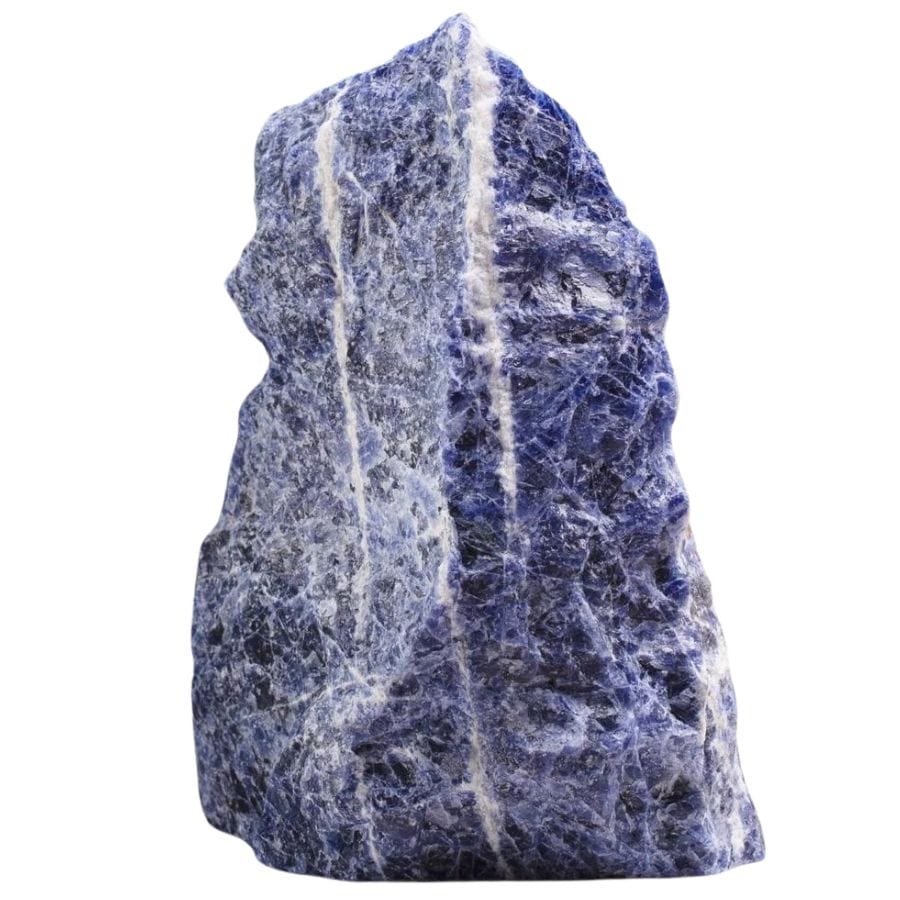
Sodalite is a member of the feldspathoid mineral group, known for its rich, royal blue color. Its chemical formula is Na 8(Al 6Si 6O 24)Cl 2, featuring sodium, aluminum, silicon, and chlorine.
The deep blue of sodalite is often speckled with white calcite, giving it a striking appearance. When it fluoresces, it glows bright orange to yellow.
This mineral typically forms in igneous rocks that are rich in sodium but low in silica, such as nepheline syenites. Major deposits of sodalite are found in countries like Brazil, Canada, and Namibia.
Scapolite
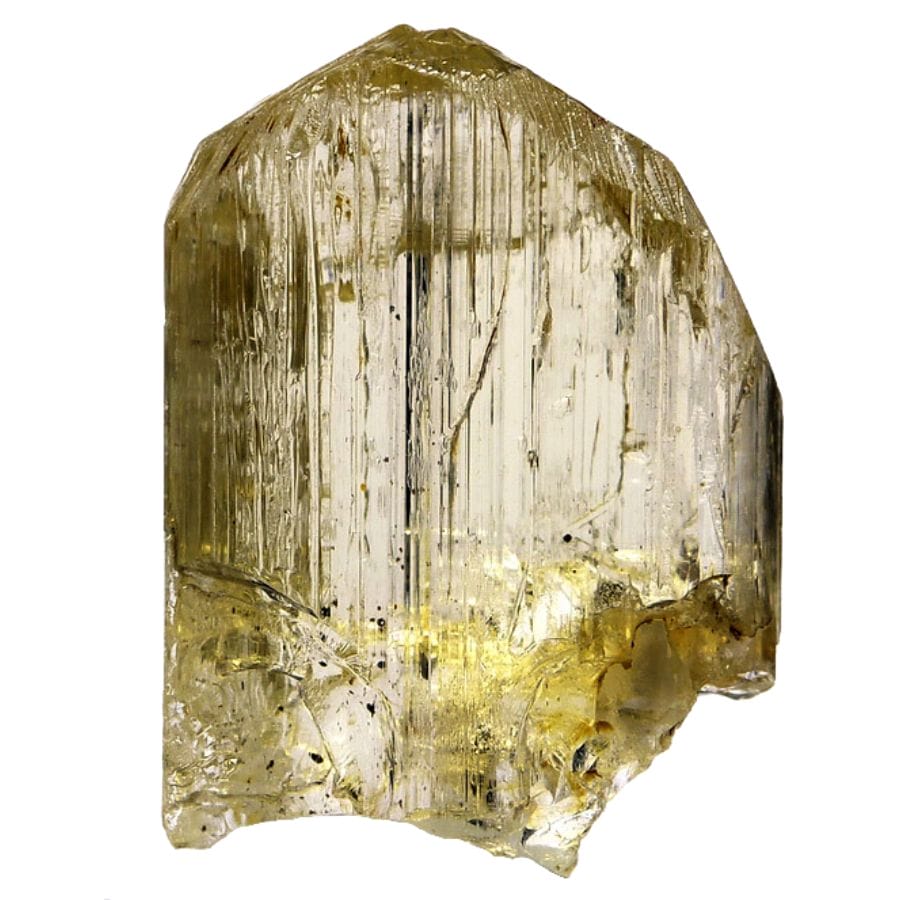
Scapolite is a group of rock-forming silicate minerals that can vary in composition, primarily consisting of calcium, aluminum, silicon, and oxygen. This mineral group ranges from marialite to meionite based on its chemical makeup.
Scapolite comes in a variety of colors, including white, gray, blue, and sometimes purple. It can exhibit a strong yellow or orange fluorescence.
This mineral forms in high-grade metamorphic rocks and in some igneous rocks as well. Notable locations for finding scapolite include Myanmar, Brazil, and Canada.
Apatite
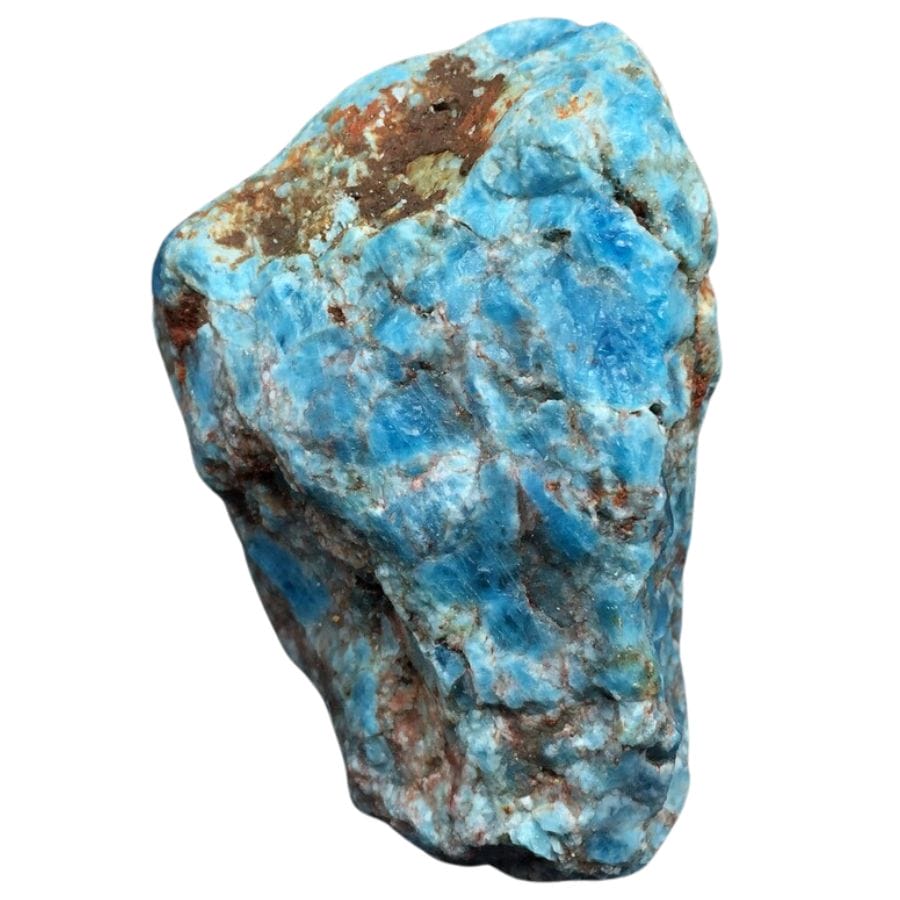
Apatite is a group of phosphate minerals that are important for biological and industrial processes. Its chemical formula usually includes calcium, phosphate, and sometimes chlorine or hydroxide.
Apatite comes in many colors, including green, blue, yellow, and sometimes clear. Under black light, some apatite crystals can glow with a yellow or greenish color.
This mineral is often found in sedimentary, metamorphic, and igneous rocks. Significant deposits of apatite are located in Russia, Brazil, and Mexico.
Zircon
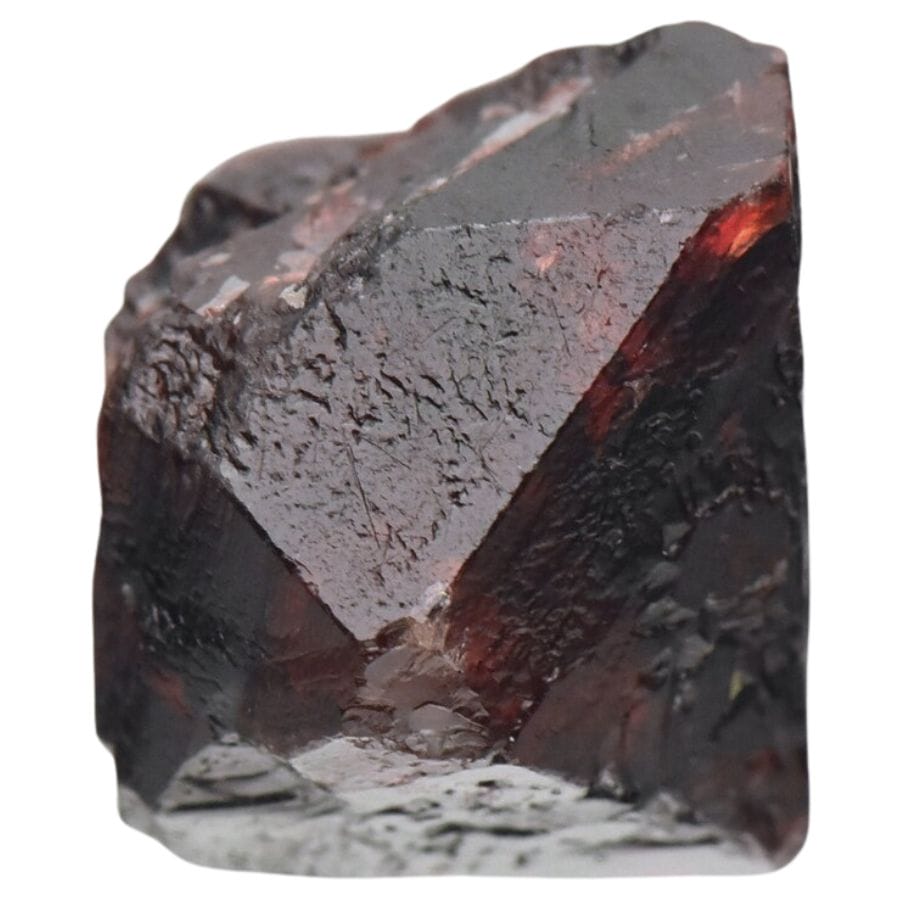
Zircon is a mineral belonging to the group of nesosilicates, with the chemical formula ZrSiO4. This formula means that zircon is made of zirconium, silicon, and oxygen.
Zircon can be found in a variety of colors, including colorless, blue, red, yellow, and brown. When certain types of zircon are exposed to black light, they can glow pale to orangey yellow.
This mineral typically forms in igneous rocks, such as granite and basalt, as well as in metamorphic rocks. You can find zircon in many places around the world, including Australia, the United States, and Sri Lanka.
Adamite
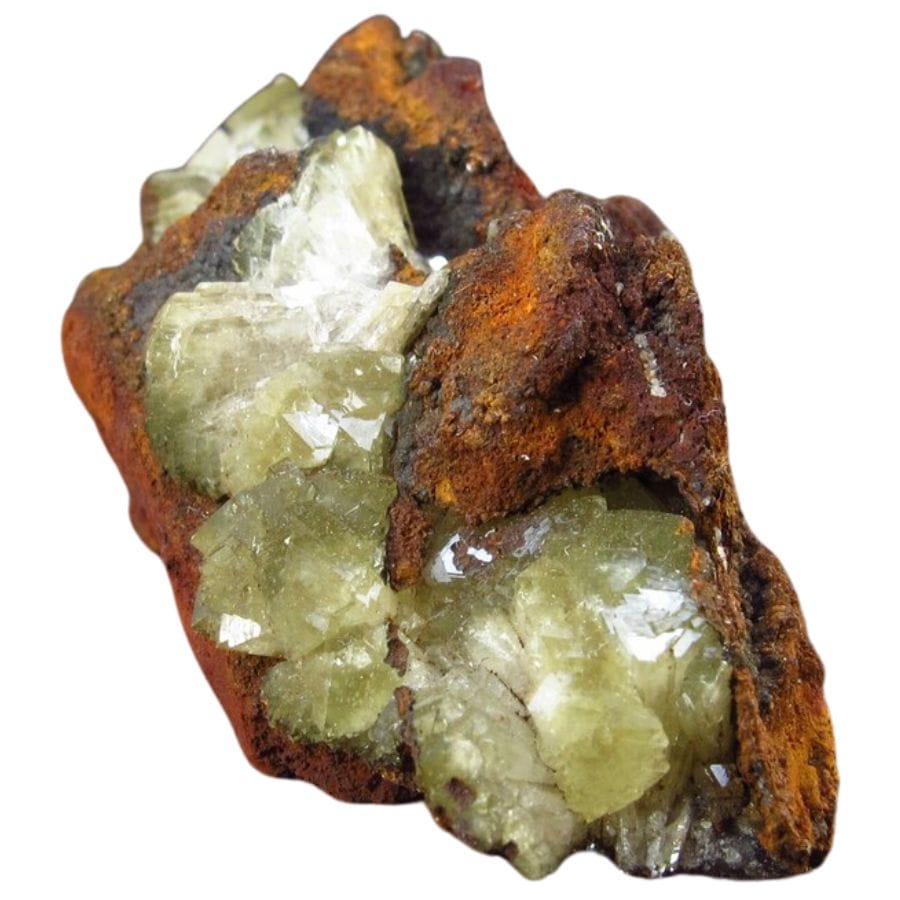
Adamite is a mineral that falls into the arsenate category, with a chemical formula of Zn2(AsO4)(OH). This means it’s composed of zinc, arsenic, oxygen, and hydrogen.
In its natural form, adamite can appear in shades of yellow, green, or even blue. It can glow bright green when it fluoresces.
Adamite forms in oxidized zones of zinc and arsenic ore deposits, requiring a specific set of geological conditions to develop. Notable locations for finding adamite include Mexico, Greece, and Namibia.
Selenite
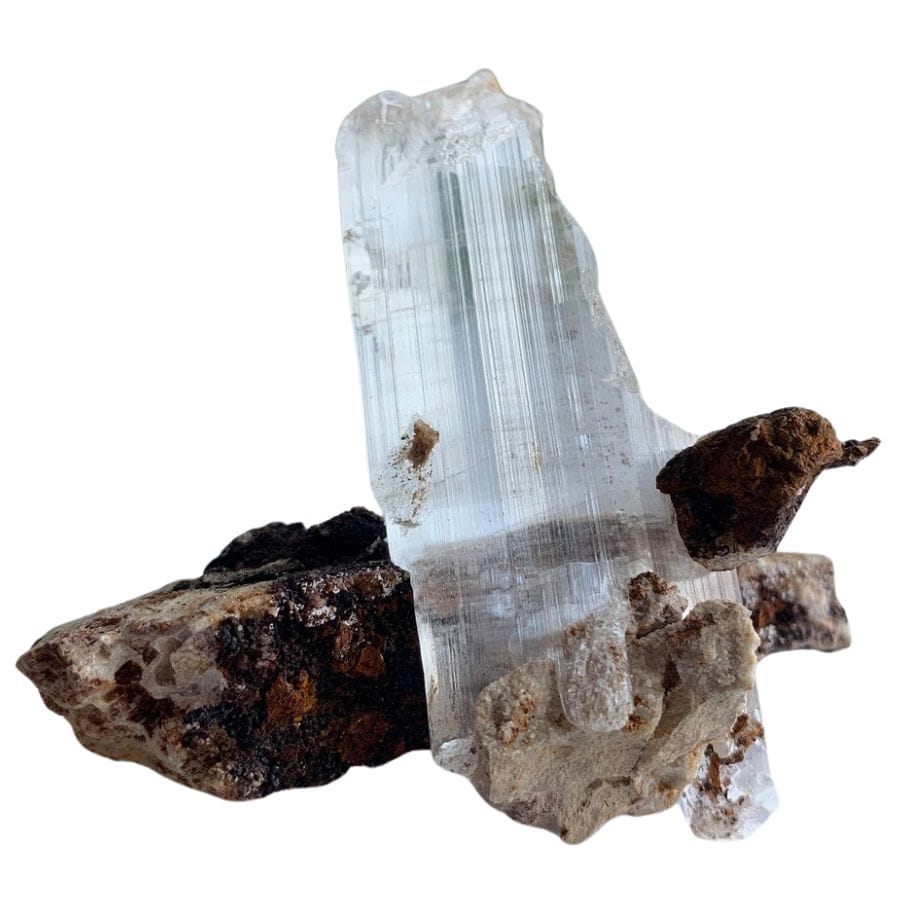
Selenite, a variety of gypsum, is known for its clarity and pearlescent sheen. Its chemical composition is calcium sulfate dihydrate, represented by the formula CaSO4·2H2O.
This mineral typically appears translucent to transparent, and it can also show shades of blue, brown, or green. When it fluoresces, it can glow yellowish-white or bluish-white.
Selenite forms in evaporative conditions, like those found in salt flats, where saline water evaporates and leaves behind minerals. You can find large deposits of selenite in places like Mexico, the United States, and Russia.
Willemite
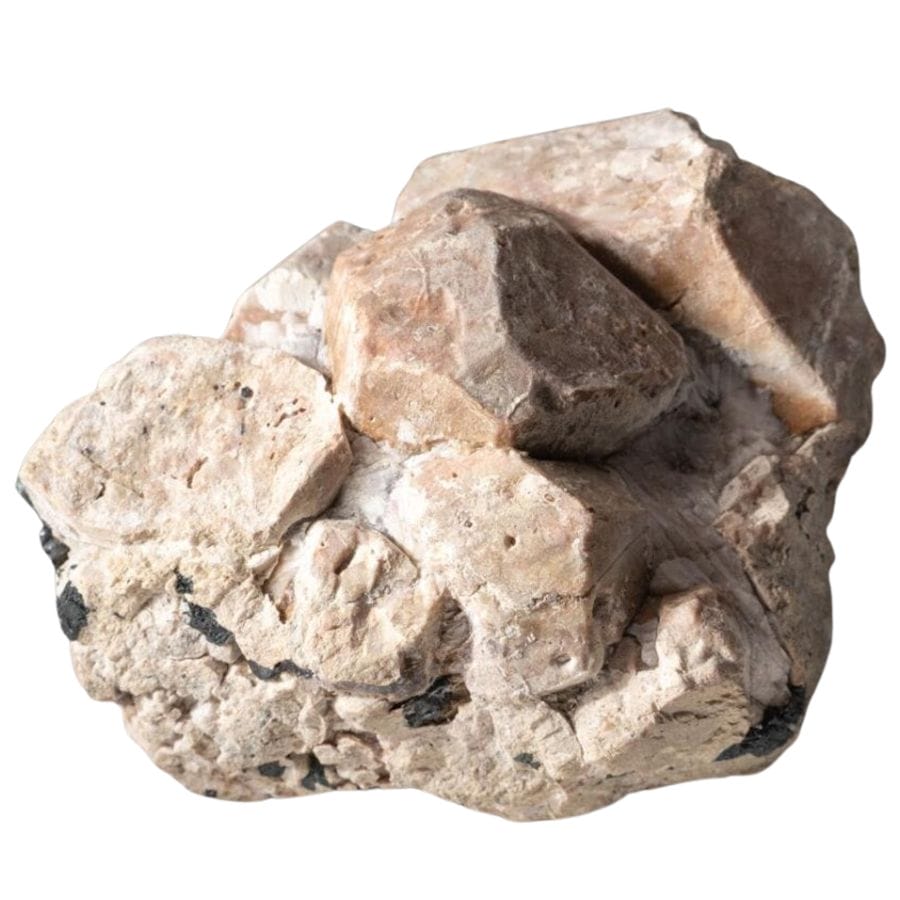
Willemite is a zinc silicate mineral, with the chemical formula Zn2SiO4. It’s part of the nesosilicate mineral group, which includes minerals composed of silicate units and other cations.
Normally, willemite can be found in green, brown, or colorless forms. When put under certain conditions, it displays a bright green or sometimes red fluorescence.
The formation of willemite occurs in metamorphosed zinc ore deposits, requiring specific geological processes. Notable locations for finding willemite include New Jersey in the United States, Namibia, and Zambia.

